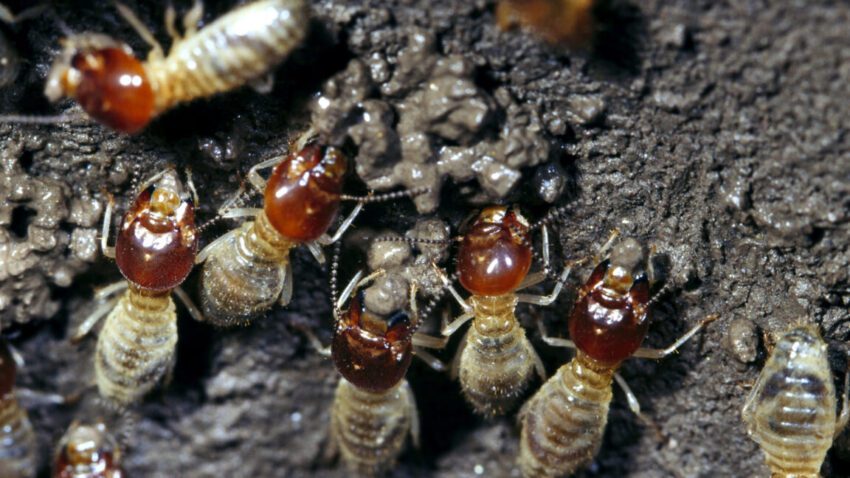
termite farmers fine-tune their weed control Recent research reveals that termite farmers are refining their methods for weed control, showcasing advanced agricultural practices that parallel human techniques.
termite farmers fine-tune their weed control
Understanding the Role of Termites in Agriculture
Odontotermes obesus is a notable species of termite known for its unique relationship with fungi, specifically a genus called Termitomyces. These termites engage in a form of symbiotic agriculture, cultivating fungi within their mounds. This process involves collecting organic materials such as dead leaves, wood, and grass, which are meticulously stacked in underground fungus gardens known as combs. The fungi play a crucial role in breaking down tough plant fibers, rendering them digestible for the termites. This intricate system exemplifies a sophisticated form of agriculture that has evolved over millions of years.
The Challenge of Weeds
Like any agriculturalist, termites face challenges, particularly from weeds that can disrupt their carefully maintained gardens. Weeds can outcompete the fungi for resources, potentially jeopardizing the food supply for the entire colony. Rhitoban Raychoudhury, a professor of biological sciences at the Indian Institute of Science Education, notes that previous studies suggested termites had a fixed response to weed infestations. “There have been numerous studies suggesting the termites must have some kind of fixed response—that they always do the same exact thing when they detect weed infestation,” he explains. However, recent findings indicate that this is not the case.
Recent Research Findings
In a groundbreaking study published in the journal Science, Raychoudhury and his team explored the behavioral responses of Odontotermes obesus when confronted with various gardening challenges, including weed infestations. The researchers aimed to understand how these termites adapt their gardening practices in response to environmental changes.
Methodology
The research team collected samples of Odontotermes obesus and placed them in controlled environments where they could observe their reactions to different types of weeds. The termites were subjected to various scenarios, including the introduction of specific weed species into their gardens. The researchers meticulously documented the termites’ behaviors, focusing on how they managed the presence of weeds and what strategies they employed to mitigate their impact.
Advanced Gardening Practices
One of the most significant revelations from the study is that termites exhibit surprisingly advanced gardening practices. Rather than relying on a fixed response to weed infestations, they demonstrate a level of adaptability that is more akin to human agricultural practices. For instance, when faced with weed competition, termites were observed to engage in behaviors such as:
- Selective Foraging: Termites adjusted their foraging patterns, selectively gathering materials that would benefit their fungal gardens while avoiding those that could promote weed growth.
- Weed Removal: In some instances, termites actively removed weeds from their gardens, showcasing a level of awareness about the detrimental effects of these plants.
- Environmental Modification: The termites altered their environment by changing the composition of their combs, which in turn affected the growth of both fungi and weeds.
These behaviors suggest that termites possess a complex understanding of their ecosystem, allowing them to make informed decisions that enhance their survival and productivity.
The Importance of Olfactory and Tactile Senses
Termites are often perceived as poor gardeners due to their lack of vision. They are effectively blind, spending the majority of their lives in the dark, navigating through the intricate tunnels of their mounds. However, they compensate for this deficiency through their advanced olfactory and tactile senses. Raychoudhury emphasizes, “They can detect the environment based on advanced olfactory reception and touch, and I think this is what they use to identify the weeds in their gardens.” This ability to sense their surroundings allows termites to detect changes in their environment, including the presence of weeds, and respond accordingly.
Implications for Ecosystem Management
The findings from this research have broader implications for ecosystem management and agricultural practices. Understanding how termites manage their gardens can provide insights into sustainable farming techniques. The adaptive strategies employed by Odontotermes obesus may inspire new approaches to weed control in human agriculture, particularly in organic farming where chemical herbicides are avoided.
Furthermore, the study highlights the importance of biodiversity in maintaining healthy ecosystems. By recognizing the role of termites in controlling weed populations, researchers and conservationists can better appreciate the interconnectedness of species within an ecosystem. This understanding can lead to more effective conservation strategies that promote biodiversity and ecosystem resilience.
Stakeholder Reactions
The research has garnered attention from various stakeholders, including ecologists, agricultural scientists, and conservationists. Many experts have expressed enthusiasm about the implications of the study for sustainable agriculture. Dr. Emily Thompson, an agricultural ecologist, remarked, “This research opens up new avenues for understanding how natural systems can inform our agricultural practices. The adaptability of termites is a testament to the complexity of ecological interactions.”
On the other hand, some stakeholders have raised concerns about the potential for misapplying these findings. While the behaviors of Odontotermes obesus are fascinating, it is essential to recognize that not all species will exhibit similar adaptive strategies. Dr. Mark Johnson, a conservation biologist, cautioned, “While we can learn from termites, we must be careful not to generalize their behaviors to all agricultural systems. Each ecosystem has its unique dynamics that must be considered.”
Future Research Directions
The study conducted by Raychoudhury and his team opens up numerous avenues for future research. One area of interest is the potential for studying other termite species and their gardening practices. By comparing the behaviors of different species, researchers can gain a deeper understanding of the evolutionary adaptations that have shaped termite agriculture.
Additionally, further investigations into the chemical signals used by termites to communicate and coordinate their responses to weed infestations could yield valuable insights. Understanding the biochemical pathways involved in these processes may lead to the development of innovative pest management strategies that mimic natural systems.
Conclusion
The research on Odontotermes obesus and its advanced gardening practices underscores the complexity of termite agriculture. These insects, often underestimated, demonstrate a remarkable ability to adapt to their environment and manage their fungal gardens effectively. As we continue to explore the intricacies of their behaviors, we may uncover valuable lessons that can inform sustainable agricultural practices and enhance our understanding of ecological interactions.
Source: Original report
Was this helpful?
Last Modified: October 10, 2025 at 11:36 pm
0 views















